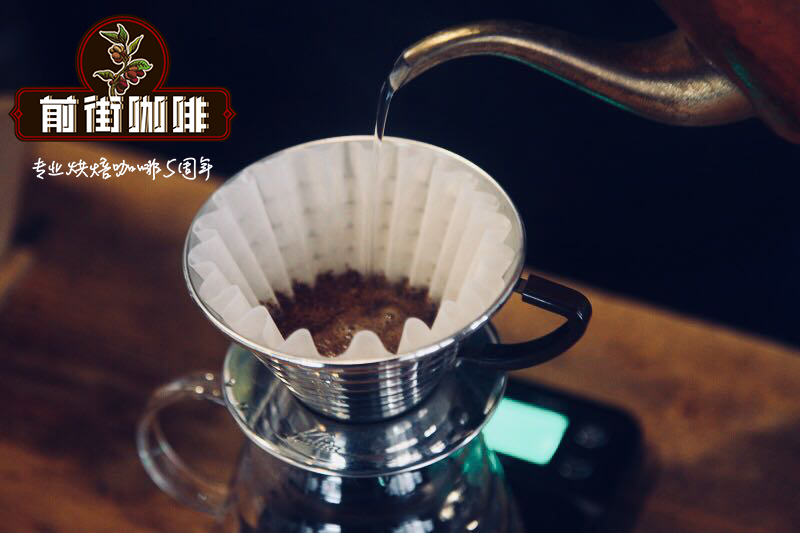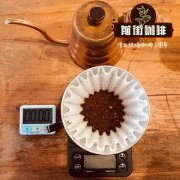A good cup of coffee espresso is the essence of coffee

Professional coffee knowledge exchange more coffee bean information please follow the coffee workshop (Wechat official account cafe_style)
In terms of pure sensory enjoyment, what are the few experiences in daily life that are comparable to a good cup of coffee? A cup of hot coffee brewed from freshly baked beans has a charming aroma that can pull sleeping people out of bed and introduce passers-by into the cafe. There are millions of people around the world, and it would be difficult to get through the day without caffeine in their coffee. It's just that in this seemingly ordinary drink, there is a very complex chemistry. Various ways from the production, roasting to preparation of coffee beans have a subtle effect on hundreds of chemicals and determine the taste, aroma and texture of coffee. If you don't have an in-depth understanding of these unimaginable processes, you'll have to try your luck to get a good cup of coffee.
Experts around the world agree that espresso (espresso) is the essence of coffee: small, strong porcelain cups filled with dark, opaque dripping filtrate covered with a mellow, reddish-brown foam ── crema. Klima is made up of thin film-coated bubbles that preserve the unique taste, aroma and heat of coffee. The word Espresso means "specially made upon request". As for the practice, the roasted coffee is ground into fine grains, pressed into a cake, and filtered quickly under pressure with a small amount of hot water. The final concentrated liquid contains not only dissolved solids, but also a large number of spice substances in suspensions covered with tiny oil droplets. All this adds up to the unique and strong taste, smell and "taste" of espresso.
Addicts believe that the perfect espresso is the best of coffee, because its special preparation can express and strengthen the natural characteristics of coffee beans. As a matter of fact, espresso is the essence of all the methods of making coffee, from Turkish style, soaking style to filter drop type. As long as you know how espresso is made, you know how all coffee is made.
High-quality coffee comes from maintaining strict control over a variety of factors, including planting environment, plant varieties and brewing process. There are countless variables in the cultivation of coffee that must be monitored and managed; once the coffee tree is fruited, the quality has been determined and nothing can be added or removed. For a cup of espresso, it takes 55 beans of 50 murmurs; as long as one of them is imperfect, it is enough to make the whole cup of coffee bad. That's because the origin of human sense of smell and taste is a defensive mechanism designed to protect our ancestors from rotten (unhygienic) food. Only by relying on modern technology can 50 perfect coffee beans be identified efficiently and reliably. .
Key summary:
There is a very complicated chemistry in the aroma of coffee. Espresso (espresso) is a manifestation of the essence of coffee, and the reddish-brown foam, called crema, which is composed of thin film-coated bubbles, preserves the unique taste, aroma and heat of coffee.
Arabica and Robasta are the most commercially valuable coffee varieties, especially Arabica with excellent quality, rich aroma and mellow smell, and its price is higher than that of Robasta, which has high yield and resistance to diseases and insect pests.
The process of making coffee includes the use of complex procedures such as optoelectronic technology to select excellent raw beans, followed by high temperature roasting to make the water in the coffee bean cells evaporate, nutrients react and produce volatile aromatic compounds. the aroma is identified and defined by experienced testers, and its chemical composition is analyzed by mass spectrometer.
Finally, it focuses on the interaction between hot water and coffee powder, that is, the way coffee is made. Each family has its own ingenuity.
END
Important Notice :
前街咖啡 FrontStreet Coffee has moved to new addredd:
FrontStreet Coffee Address: 315,Donghua East Road,GuangZhou
Tel:020 38364473
- Prev

Coffee Seven basic Coffee tasting lessons hand-made coffee boutique coffee
Professional coffee knowledge exchange more coffee bean information Please follow the coffee workshop (Wechat official account cafe_style) Coffee lovers can not forget its taste, do not drink a cup every day, feel lethargic all day. For people who drink coffee for the first time, most of them taste bitter. In fact, coffee also tastes sour and sweet. Next, let's taste the seven flavors of coffee with you. Single
- Next

The world's five "strange coffee" novelty or innovation? How much can be added to coffee?
Professional coffee knowledge exchange more coffee bean information Please follow the coffee workshop (Wechat official account cafe_style) not the weirdest, only more strange taste these days, what litchi dipped in soy sauce, fried moon cakes with green pepper, Banlangen instant noodles strange taste counterattack, there is no weirdest, only weirder. Not long ago, Australian news media The Courier Mail sorted out the five strangest things in the world.
Related
- How did the Salvadoran coffee industry develop in Central America?
- What exactly does the golden cup extraction of coffee mean?
- The Origin of Coffee flower
- [2023 Starbucks World Earth Day] there are more meaningful things besides free Starbucks coffee!
- What kind of coffee is there in Spain? 9 Flavors of Spanish Coffee
- Aromatic African coffee| Kenya's coffee culture and historical production area
- Liberica Coffee Bean knowledge: the characteristics of Liberian Coffee beans of the three original species of Coffee beans
- The origin and formula of Spanish latte introduces the taste characteristics of Bombon coffee in Valencia, Spain.
- How to adjust the solution of over-extracted coffee
- What is the tasting period of coffee beans? What is the period of coffee and beans? How should coffee wake up and raise beans?

